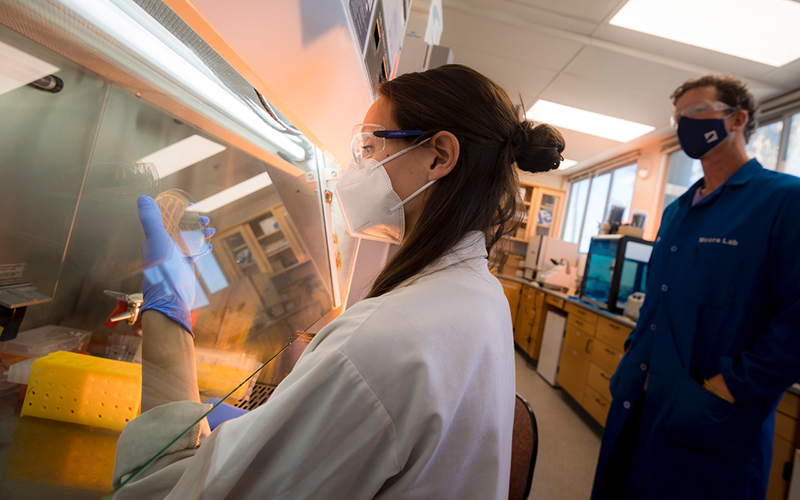Years of toil in the laboratory have revealed how a marine bacterium makes a potent anti-cancer molecule.
The anti-cancer molecule salinosporamide A, also called Marizomib, is in Phase III clinical trials to treat glioblastoma, a brain cancer. Scientists now for the first time understand the enzyme-driven process that activates the molecule.
Researchers at UC San Diego’s Scripps Institution of Oceanography found that an enzyme called SalC assembles what the team calls the salinosporamide anti-cancer “warhead.” Scripps graduate student Katherine Bauman is the lead author of a paper that explains the assembly process in the March 21 issue of Nature Chemical Biology.
The work solves a nearly 20-year riddle about how the marine bacterium makes the warhead that is unique to the salinosporamide molecule and opens the door to future biotechnology to manufacture new anti-cancer agents.
“Now that scientists understand how this enzyme makes the salinosporamide A warhead, that discovery could be used in the future to use enzymes to produce other types of salinosporamides that could attack not only cancer but diseases of the immune system and infections caused by parasites,” said co-author Bradley Moore, a Distinguished Professor at Scripps Oceanography and the Skaggs School of Pharmacy and Pharmaceutical Sciences.

